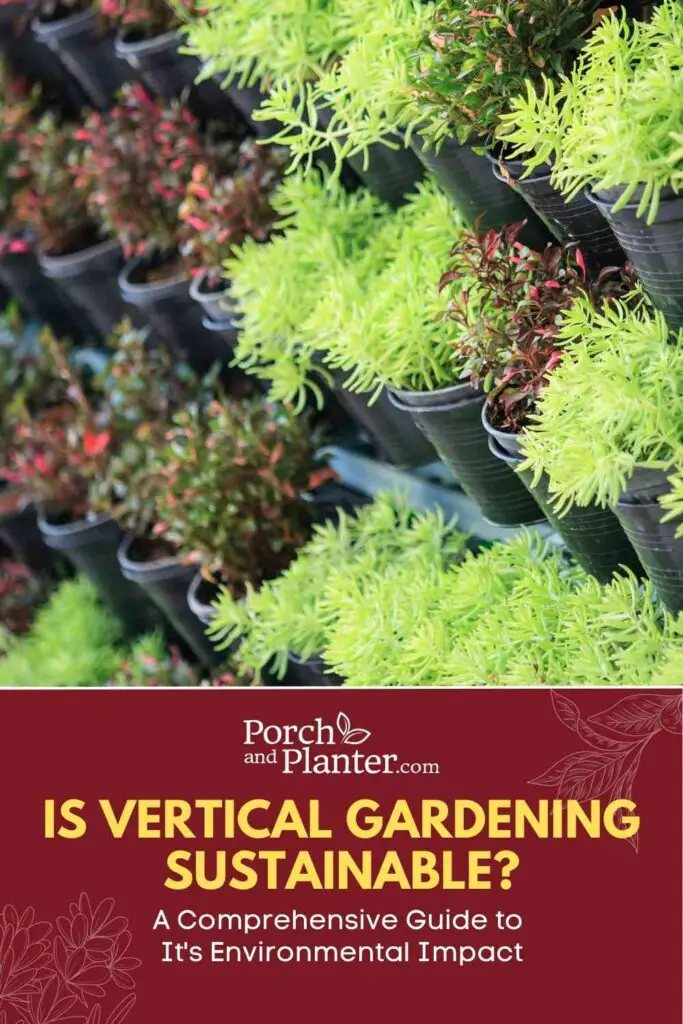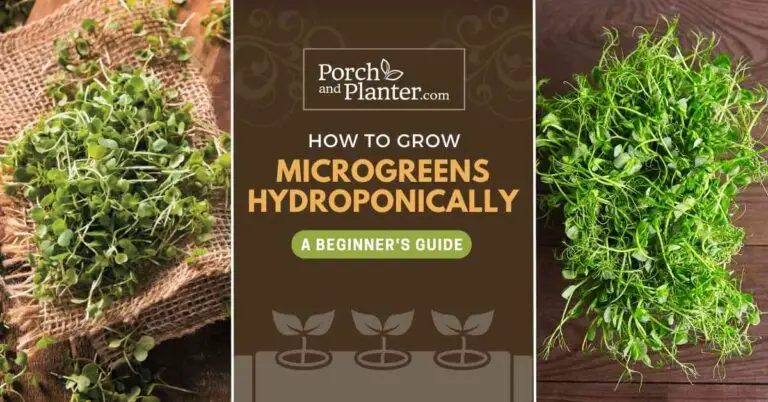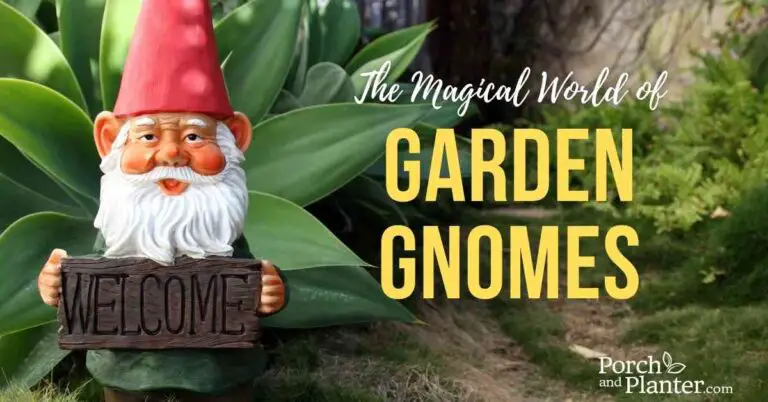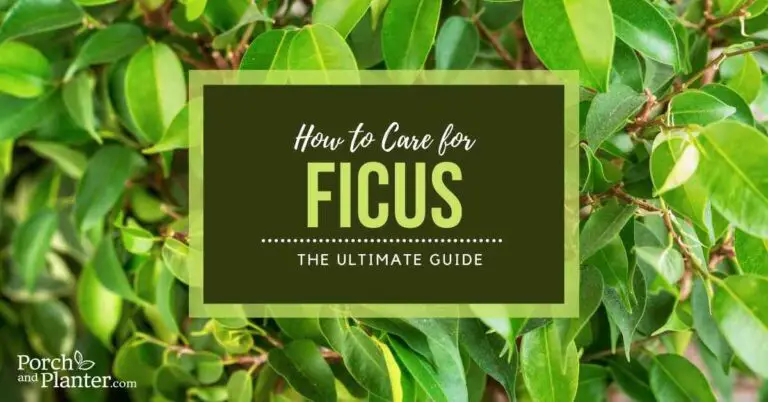Is Vertical Gardening Sustainable? A Comprehensive Guide to Its Environmental Impact
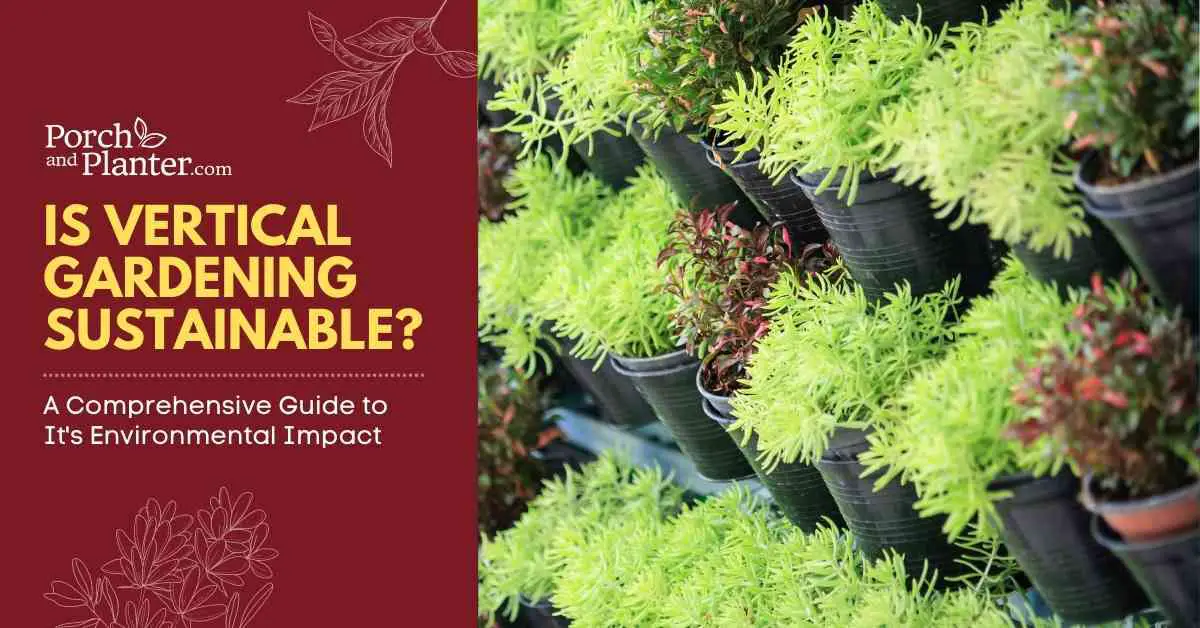
If you’re interested in gardening, you’ve probably heard of vertical gardening. This method of growing plants is becoming increasingly popular among gardeners, especially those who live in urban areas. Vertical gardening involves growing plants upwards instead of outwards, using walls, trellises, and other structures to support them. But is vertical gardening sustainable?
Yes, vertical gardening is considered a sustainable way to grow crops at home. In fact, vertical gardens use less water, fertilizers, and pesticides and absorb more carbon dioxide per square foot than conventional gardens. This makes them an eco-friendly way to grow your own produce.
Vertical gardening is not only sustainable, but it’s also a great way to maximize your growing space. If you have limited space in your yard or balcony, you can still grow a variety of plants by going vertical. Plus, vertical gardens can be visually stunning, adding a unique touch to your home’s exterior or interior. Keep reading to learn more about the benefits of vertical gardening and how to get started.
What is Vertical Gardening?
If you have limited space or want to grow plants in an urban environment, vertical gardening may be the answer for you. Vertical gardening is the practice of growing plants vertically, using walls, trellises, or other structures to create a vertical garden. This technique allows you to maximize space and grow more plants in a smaller footprint.
Vertical gardening can be done indoors or outdoors, and it can be used to grow a variety of plants, including vegetables, herbs, and flowers. It’s a great way to add greenery to your home or office, and it can also help improve air quality and reduce noise pollution.
There are several different types of vertical gardening systems, including:
- Living walls/green walls: These are vertical gardens that are attached to a wall or other vertical surface. They can be made from a variety of materials, including felt, fabric, or plastic.
- Trellises: These are structures that are used to support climbing plants, such as tomatoes or cucumbers. They can be made from wood, metal, or other materials.
- Hydroponic systems: These are vertical gardens that use a soil-free system to grow plants. They can be used indoors or outdoors and are often used to grow herbs and vegetables.
Vertical gardening has become increasingly popular in recent years, as more people are looking for ways to grow their own food and reduce their environmental impact. While there are some challenges to vertical gardening, such as the need for proper irrigation and lighting, it can be a sustainable way to grow plants and improve your living space.
Benefits of Vertical Gardening
Vertical gardening is a sustainable way to grow plants in limited spaces. If you’re looking for a way to grow your own food or beautify your surroundings, vertical gardening might be the solution you need. Here are some of the benefits of vertical gardening:
Sustainable Use of Space
One of the biggest advantages of vertical gardening is that it allows you to make the most of limited space. You can grow plants in a small balcony, patio, or even indoors. By using vertical space, you can increase your planting area without taking up much floor space. Plus, you can use a variety of containers, such as hanging baskets, wall-mounted planters, and trellises, to create a beautiful and functional garden.
Reduced Water Usage
Vertical gardening can also help you save water. Since the plants are grown vertically, the water can be delivered directly to the roots, reducing water waste. In addition, vertical gardens can be designed to capture rainwater and reuse it for irrigation. This means less water is needed to maintain the garden, making it a more sustainable and eco-friendly option.
Improved Air Quality
Vertical gardens can also help improve the air quality in your home or office. Plants absorb carbon dioxide and release oxygen, which can help purify the air and reduce pollution. In addition, plants can absorb harmful toxins and chemicals, such as formaldehyde and benzene, that are commonly found in indoor environments. By growing plants vertically, you can create a healthier and more natural environment for you and your family.
Environmental Impact of Vertical Gardening
Vertical gardening is a sustainable practice that has a positive impact on the environment. By growing plants vertically, you can reduce your carbon footprint, pesticide use, and transportation costs.
Reduced Carbon Footprint
Vertical gardening helps reduce your carbon footprint by reducing the amount of energy required to produce, transport, and store your food. By growing your own food vertically, you can reduce the amount of energy required to transport food from the farm to your table. This is because vertical gardens can be grown in urban areas, which are closer to consumers, reducing the distance food needs to travel.
Additionally, vertical gardening can help reduce the amount of carbon dioxide in the atmosphere. Plants absorb carbon dioxide during photosynthesis, which helps reduce the amount of greenhouse gases in the atmosphere. Vertical gardens can be used to create green walls or roofs, which can help reduce the amount of heat absorbed by buildings, reducing the need for air conditioning and further reducing your carbon footprint.
Reduced Pesticide Use
Vertical gardening can help reduce the amount of pesticides used in agriculture. By growing plants vertically, you can reduce the amount of space required to grow your food, which can help reduce the need for pesticides. Additionally, vertical gardens can be grown indoors, which can help reduce the number of pests that can damage your plants. This means you can reduce the amount of pesticides used to protect your plants from pests.
Reduced Transportation Costs
Vertical gardening can help reduce transportation costs by reducing the distance food needs to travel. By growing your own food vertically, you can reduce the amount of energy required to transport food from the farm to your table. This can help reduce the amount of fuel required to transport food, which can help reduce the amount of greenhouse gases emitted by transportation.
Additionally, vertical gardening can help reduce the amount of packaging required to transport food. This is because vertical gardens can be grown in urban areas, which are closer to consumers, reducing the amount of packaging required to transport food over long distances.
Challenges of Vertical Gardening
Maintenance Requirements
Vertical gardening requires more maintenance than traditional gardening. You will need to water your plants more frequently as the soil dries out faster in vertical gardens. Also, you will need to fertilize your plants more often to ensure they get all the necessary nutrients. Pests and diseases are also more common in vertical gardens, so you will need to keep a close eye on your plants and take action at the first sign of trouble.
Costs
Setting up a vertical garden can be expensive. You will need to purchase a vertical gardening system or build one yourself. Also, you will need to buy soil, plants, and other gardening supplies. The cost of electricity to power grow lights can add up as well. Additionally, vertical gardens require more maintenance, which means more time and money spent on upkeep.
Limited Crop Selection
Not all plants are suitable for vertical gardening. Plants that grow tall or have deep roots may not be the best choice for a vertical garden. In addition, some plants require more space than others to grow properly. This means that your crop selection may be limited, and you may not be able to grow everything you want in your vertical garden. Overall, vertical gardening has its challenges, but it can still be a sustainable way to grow plants. By being aware of the maintenance requirements, costs, and crop selection limitations, you can make informed decisions about whether this sustainable gardening method is right for you.
Conclusion
Vertical gardening is a sustainable and eco-friendly way to grow plants, especially in urban areas where space is limited. It has numerous benefits, including increased food production, reduced water usage, and improved air quality. However, it is important to note that the sustainability of vertical gardening depends on the materials used, the type of crops grown, and the overall management of the garden. By using environmentally friendly materials, selecting appropriate crops, and implementing sustainable practices, vertical gardening can be a viable solution to many of the environmental challenges we face today.
